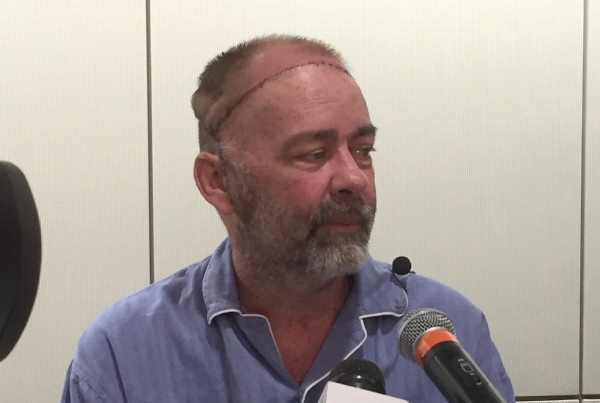An affluent community in North Texas – McKinney, Texas to be exact – has become the latest hotspot in a national conversation about police and race. It started with a telephone call about unwelcome teenagers at a community pool who reportedly used the pool without permission and refused to leave. Nine police officers were sent to scene.
The ensuing melee was captured on videotape and posted to YouTube.
The profanity-laced video shows white police officers trying to control black teens as they scatter. We’re in a leafy green suburb, very different from some of the more attention-grabbing incidents in recent media reports throughout the nation. Police Cpl. Eric Casebolt pulls one 15-year-old girl to the ground – pinning her there – and seconds later draws his gun and points it at two teens who try to come to her aid.
Officer Casebolt has been placed on administrative leave. City staff and police have launched an investigation into the incident. To add his two cents to a widening conversation about race and the use of police force, Scott Bowman, associate professor in the School of Criminal Justice at Texas State University, joins the Texas Standard.
Were you surprised at the police misconduct in a more affluent suburban setting shown in the video?
“The most important thing to consider in the video is that, unlike some of the other videos, this literally picks up right in the middle of it. So we don’t necessarily know what happened before that. We don’t know if there was some dynamic that offers some better explanation. However, from what was seen in the video itself, I’m not sure that it is a surprise. On some level police officers are being asked to take account of their actions in a way that they really haven’t before.”
What is one of the more important questions posed in this ongoing dialogue?
“The ultimate question now…on a national level, is this question of just because it’s legal or just because I have the approval to take a particular action doesn’t necessarily mean that it’s right and it doesn’t necessarily mean it’s the best action.”
What effect does this bystander-as-camera-holder have on policing?
“One of the single greatest changes to policing as an active function has been the advent and the use of video technology. You get this picture of the Rodney King incident 20 years ago of this individual with a giant camera on their shoulder videotaping and then popping out a VCR tape to…show other people. You fast forward and now everybody has a camera. We get video from multiple angles and multiple scenes.”
Does police brutality influence people’s trust in police?
“Because [police brutality] happens so frequently in communities without power–racial and ethnic communities, minority communities, poor communities, in some instances rural communities–it just further diminishes the relationship.”
Is it fair to say the acts in this video are racially motivated?
“I think it’s fair to reserve judgement. I think that the most important part…is that it’s a partial video, it’s not the entire video. We don’t know exactly what happened. I think that as you piece together information, it seems, at least to me, it’s leaning toward a racial dynamic if some of the additional accounts are true.”
Bowman says the video raises questions, but viewers should wait for all the information to be released before passing judgement.
“Visually, it’s hard not to look at officers chasing, yelling…commanding young black males and females in a video while their white or non-black counterparts are just kind of standing and watching this take place. But we don’t know the whole story and I think…once the entire narrative comes out…we’ll kind of have a better sense, but I’m still not sure everyone will agree even after that.”















